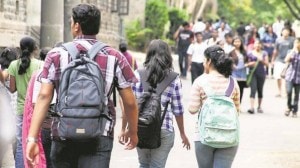Nitish Express: New trains on track, safety derailed
On February 24, Union Railways Minister Nitish Kumar will present the new rail budget. And if past trends are any indication, chances are th...

On February 24, Union Railways Minister Nitish Kumar will present the new rail budget. And if past trends are any indication, chances are that he will announce many new trains, even as many as 80. So what if officials in his ministry are already struggling to handle the present load. While new trains are announced with regularity, not much is done to proportionally improve the capacity or condition of the railway tracks.
The result: frequent train accidents. A study by the Railways’ Safety Directorate revealed that most train derailments occurred due to the poor condition of the tracks — rail fractures — and lack of maintenance. For the past four years, the Railways recorded nearly 500 accidents every year, taking a toll of over 1,600 precious lives. Most of these accidents were caused by the poor state of the tracks. The railway staff’s failure to detect rail fractures on time also contributed to the mishaps. The Railways has identified over 17,000 km of track which needs to be replaced. Lately, cases of sabotage, as in the case of the Howrah Rajdhani where the inquiry report apparently concluded that the fish-plates had been removed, were also reported.
The Railways’ engineering and traffic departments have sent a number of reports to Nitish on the neglected state of the tracks and the lack of time and resources to maintain them. But the minister remained occupied with the political manipulations within the Samata Party. So, the repeated suggestions by senior railway officials went unheeded.
‘‘With the number of accidents on an upswing and a derailment every second day, additional trains are the last thing that the Railways need to help improve safety on the tracks. But the minister is sure to announce several new trains,’’ said a senior official.
The increasing number of trains is putting additional pressure on the already aging tracks. ‘‘While in 1999-2000, less than 20 new trains were announced, last year as many as 70 new trains were started — most of which were not even included in the budget. Also, trains like Jana Shatabdi, started last year, had no takers,’’ he added.
Nitish, when contacted, admitted that ‘‘it is not possible to put a moratorium on new trains.’’ According to him, there is an increasing demand for new trains. And for the economy to grow, trains have to run, he said. The solution, he added, was not to stop introducing new trains but to improve line capacity.
‘‘Everything is being done to strengthen and improve the existing system. The Railways have earmarked Rs 17,000 crore under the Special Railway Safety Fund (SRSF) for track renewal, bridge rehabilitation, signal-gear replacement and improved training,’’ claimed the minister.
However, a study of the previous budgets reveals that while the amount allocated for track renewal increased steadily — from Rs 1,500 crore in 1999-2000 to Rs 2,703 crore in the last budget — it was still not enough to keep pace with the speed of wear and tear of tracks. ‘‘Most of the amount is spent in taking care of the arrears,’’ said a railway official. Even the money from the SRSF has not helped much since the fund is also being used to replace 300 distressed bridges and obsolete signalling systems at 950 stations.
According to the railway minister, the Golden Quadrilateral connecting the four metropolitan cities will also be strengthened under the Rashtriya Rail Vikas Yojana. Additional safety-related powers have been delegated to Divisional Railway Managers and General Managers of zones, who will be held accountable for accidents in their area, said Nitish.
The minister added that double rail Ultrasonic Flaw Detectors (USFD) and sophisticated track recording cars and oscillograph cars have also been procured to detect flaws in rail and welds. Training facilities for drivers, guards and staff connected with train operations have been modernised and simulators are being used.
Also, in an attempt to prevent sabotage, instructions have been issued to divisions to reduce the number of fish-plate joints and to strengthen them in vulnerable stretches. Efforts are also being made to develop anti-theft elastic rail clips and fish bolt fastening, said Nitish.
But whether all these efforts prove worthwhile or not remains to be seen.



- 01
- 02
- 03
- 04
- 05



























